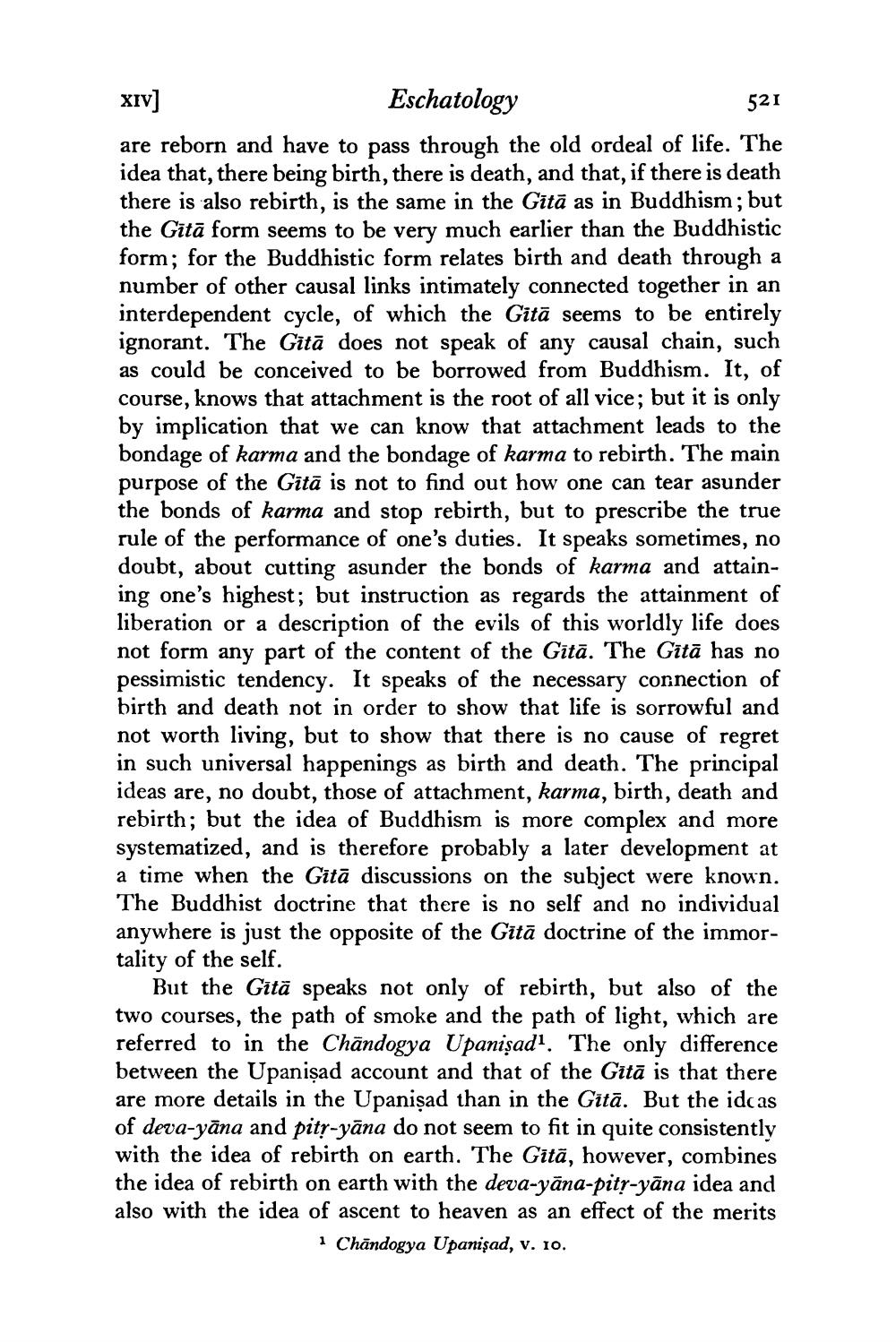________________
XIV] Eschatology
521 are reborn and have to pass through the old ordeal of life. The idea that, there being birth, there is death, and that, if there is death there is also rebirth, is the same in the Gitā as in Buddhism; but the Gītā form seems to be very much earlier than the Buddhistic form; for the Buddhistic form relates birth and death through a number of other causal links intimately connected together in an interdependent cycle, of which the Gitā seems to be entirely ignorant. The Gitā does not speak of any causal chain, such as could be conceived to be borrowed from Buddhism. It, of course, knows that attachment is the root of all vice; but it is only by implication that we can know that attachment leads to the bondage of karma and the bondage of karma to rebirth. The main purpose of the Gītā is not to find out how one can tear asunder the bonds of karma and stop rebirth, but to prescribe the true rule of the performance of one's duties. It speaks sometimes, no doubt, about cutting asunder the bonds of karma and attaining one's highest; but instruction as regards the attainment of liberation or a description of the evils of this worldly life does not form any part of the content of the Gītā. The Gītā has no pessimistic tendency. It speaks of the necessary connection of birth and death not in order to show that life is sorrowful and not worth living, but to show that there is no cause of regret in such universal happenings as birth and death. The principal ideas are, no doubt, those of attachment, karma, birth, death and rebirth; but the idea of Buddhism is more complex and more systematized, and is therefore probably a later development at a time when the Gitā discussions on the subject were known. The Buddhist doctrine that there is no self and no individual anywhere is just the opposite of the Gitā doctrine of the immortality of the self.
But the Gitā speaks not only of rebirth, but also of the two courses, the path of smoke and the path of light, which are referred to in the Chāndogya Upanişadı. The only difference between the Upanisad account and that of the Gitā is that there are more details in the Upanișad than in the Gitā. But the ido as of deva-yāna and pity-yāna do not seem to fit in quite consistently with the idea of rebirth on earth. The Gitā, however, combines the idea of rebirth on earth with the deva-yāna-pity-yāna idea and also with the idea of ascent to heaven as an effect of the merits
1 Chăndogya Upanişad, v. 10.




